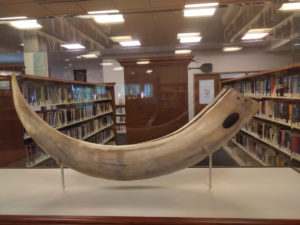Lincoln Ellsworth was born in Chicago on May 12, 1880, to Hudson native James W. Ellsworth and his wife, Eva. The Ellsworths had one other child, a daughter named Clare, who was born in 1885.

When Eva died in November 1888, James sent his children back to Hudson to live with their grandmother, Mary. While James continued to grow his financial empire, the children lived on a remodeled family farm, which James had renamed “Evamere” in honor of his late wife. Lincoln attended school at Western Reserve Academy and later The Hill School in Pottstown, Pennsylvania. When Lincoln was fifteen, his father remarried New York socialite Julia Clark Fincke.
After graduating from the Hill School, Lincoln attended Columbia University for two years. In 1902, he joined an expedition to survey western Canada for the Canadian Pacific Railway, and continued to work for the railway as an engineer until 1907. In 1909, he went west as a gold prospector along the Peace River, and in 1910, joined the Cougarock Mining Co. in Alaska. He also worked on a U.S. biological survey of the Rocky Mountains.
In 1924, he was chosen to lead an expedition sponsored by Johns Hopkins University, making a geological survey across the Andes Mountains, from the Amazon Basin to Peru on the Pacific Ocean. His success in South America brought him to the attention of famed explorer Roald Amundsen.
After appealing to his father for funding for an arctic expedition, Lincoln Ellsworth succeeded in a polar crossing, which had been a long-term goal for him. In 1925, Ellsworth, Amundsen, and a small crew attempted to fly over the North Pole by airplane. They reached 87°44’ when their planes became disabled. After thirty days stranded on the ice, they managed to get one plane off the ground and escape to Spitsbergen (Svalbard). While Lincoln was lost and presumed dead, his father, James W. Ellsworth died in Italy, never knowing his only son was safe.
The following year, Amundsen and Ellsworth made another attempt at a polar flight, employing the services of famed Italian aviator and arctic explorer Umberto Nobile. Instead of airplanes, they used the dirigible “Norge”, traveling 3,393 miles from Spitsbergen, Norway to Teller, Alaska, arriving in Teller on May 13, 1926.
Ellsworth continued his polar explorations after Amundsen’s death. In 1931, he was part of the Wilkins-Ellsworth Trans-Arctic Submarine Expedition and the American Geographical Society’s polar flight in the “Graf Zeppelin”. That same year, he made an 800 mile canoe trip through central Labrador.
On May 23, 1933, Lincoln Ellsworth married Mary Louise Ulmer. The couple divided their time between Schloss Lenzburg in Switzerland and a home in New York City.
Lincoln Ellsworth made an important flight over Antarctica in 1935, covering 2,300 miles of previously unexplored continent. He crossed Antarctica again in 1939 in his airplane, the Polar Star. He originally named this territory Ellsworth Land in honor of his father, but today this region is called the Ellsworth Mountains in honor of Lincoln Ellsworth. The total area of new Antarctica territory explored by Lincoln Ellsworth is 300,000 square miles, and is the basis for much of the United States claim to territory in Antarctica.
Ellsworth also was the recipient of many national and international awards. He received two Congressional gold medals for his work on behalf of the United States and in 1988 the U.S. Post Office issued a commemorative postage stamp featuring his picture. Ellsworth’s Antarctic plane, the Polar Star, is on display at the National Air and Space Museum. It is believed that the Hudson City Schools are named the “Explorers” in his honor.
He died at his home in New York City on May 26, 1951 at age 71, and is buried in Hudson, Ohio.
Related Collections

Woolly Mammoth Tusk
Once belonging to Lincoln Ellsworth, Hudsonite and Noted Polar Explorer



